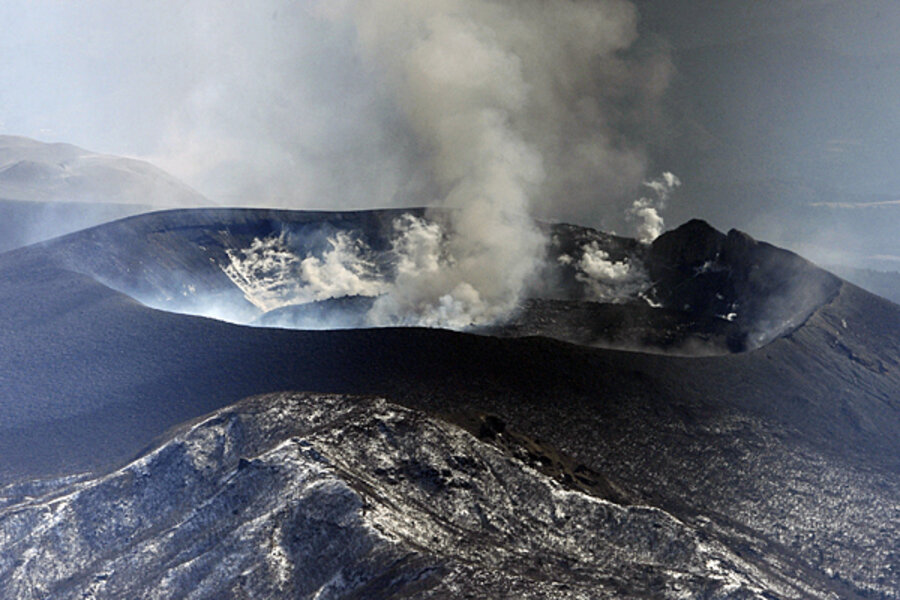Japan's Shinmoedake volcano eruption prompts increased alert levels
Loading...
| Tokyo
Authorities in southern Japan today increased alert levels after a volcano produced its most powerful eruption since it exploded back to life almost a week ago. Concern is mounting that the activity could be a prelude to far more destructive eruptions.
Shinmoedake, part of the Mount Kirishima cluster of volcanoes on the island of Kyushu, scattered thick ash over a wide area, toppled trees, and shattered windows in buildings and cars five miles away.
Local media said boulders had landed on roads some distance from the 4,662-foot peak, while one woman was reportedly cut by broken glass. No serious injuries have been reported since the volcano erupted last Wednesday, its fist major activity for 52 years.
More than 1,000 residents in high-risk areas were advised to seek refuge in evacuation centers, although so far only about 600 have done so. Those who opted to stay at home are protecting themselves from the ash with facemasks and sunglasses.
James Bond aficionados will know Shinmoedake, located on the border of Miyazaki and Kagoshima prefectures about 950 kilometers southwest of Tokyo, as the underground lair of Blofeld, 007’s nemesis in the 1967 film, "You only live twice."
The initial activity forced the cancellation of dozens of flights and disrupted train services. Many local schools were closed and farmers reported ash damage to crops.
Yesterday, officials widened the no-access zone to 2-1/2 miles from the peak, amid warnings from the meteorological agency that the area could be engulfed with hot gas and ash. The general alert level was raised from 2 to 3, on a scale of 1 to 5.
At one point, the initial eruption sent a plume of smoke 3,000 meters into the air, although by the end of last week the cloud had shrunk to a height of about 1,000 meters.
Japan’s public broadcaster, NHK, said today’s eruption was five times bigger than the first one recorded last week.
Pressure from below ground has caused a build-up of lava in the crater that has risen dramatically in the past five days. It is not clear whether the ongoing volcanic activity will produce enough lava – which is formed when liquid magma cools – to breach the crater rim and set off large flows down the sides of the mountain.
Volcanologists warned that similarities existed between the fresh activity and that produced by Shinmoedake 300 years ago. Those eruptions were 10 times bigger than the recent ones and lasted for about 18 months, killing six people, the Yomiuri newspaper reported.
Meteorological officials in Kagoshima said satellite images showed that the lava dome had widened from 100 meters across to 500 meters between last Thursday and the weekend.
“The eruption process is quite similar to the eruptions [of 1716 and1717], so more violent eruptions could take place,” Ryusuke Imura, an associate professor at Kagoshima University and expert on volcanic topography, told the newspaper.
Eruptions are not uncommon in Japan, which lies on the “Ring of Fire” of volcanic and seismic activity encircling the Pacific Ocean. Forty-three people died when Mount Unzen, also located on Kyushu, erupted in 1991. In 2000, all 3,800 residents of Miyakejima island were evacuated after Mount Oyama erupted. They were not allowed to return permanently to the island, 180 kilometers south of Tokyo, until early 2005.
Japan’s highest mountain, the 12,389-foot Mount Fuji, is considered at low risk of erupting: its last recorded eruption came in December 1707 and lasted two weeks.





